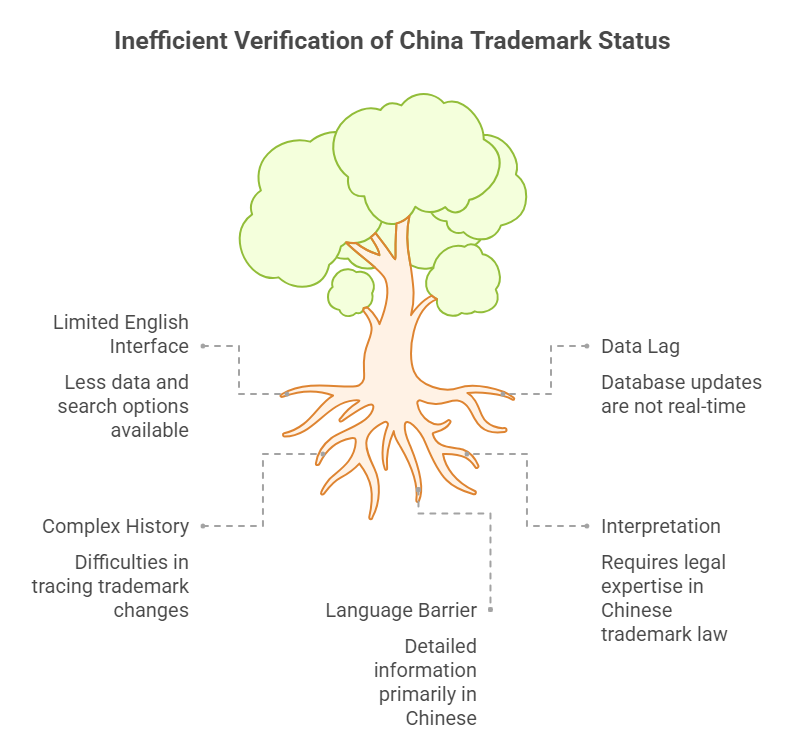For international businesses partnering with Chinese companies, verifying the legitimacy and status of trademarks is a critical step in risk management and intellectual property protection. The China National Intellectual Property Administration (CNIPA) provides an official, free online database – the China Trademark Website – enabling anyone to search and verify trademark details. Mastering this tool is essential for due diligence. Here’s a comprehensive guide:

1. Accessing the China Trademark Website:
- Go to the official CNIPA website: https://english.cnipa.gov.cn/
- Navigate to the “Services” section and find the “Trademark Search” link, or use the direct trademark database portal: http://wcjs.sbj.cnipa.gov.cn/ (This is the English interface; a more detailed Chinese version exists at https://sbj.cnipa.gov.cn/).
- Bookmark this page for future reference.
2. Performing a Basic Trademark Search:
- Search Methods: The English interface offers “International Classification Number,” “Application Number/Registration Number,” and “Trademark Name” search options. The Chinese interface offers more fields, including applicant name.
- Using the Chinese Interface (Recommended for Accuracy):
- Use Google Translate (or similar) on the browser page if needed.
- Select the search type (e.g., 商标名称 – Trademark Name, 申请人名称 – Applicant Name).
- Enter the known trademark details. For Chinese characters, ensure correct input.
- Click the search button (查询).
- Interpreting Results: The search returns a list of potentially matching trademarks. Click on the relevant application/registration number to view detailed information.
3. Understanding Key Trademark Status Information:
Once you access the detailed view of a specific trademark record, scrutinize these critical fields:
- Trademark Name & Image: Confirms the exact mark and its graphical representation (if applicable).
- Application Number & Registration Number: The unique identifiers. If registered, both numbers are present.
- International Classification: The Nice Classification class(es) the trademark is registered under (e.g., Class 9 for electronics, Class 25 for clothing).
- Applicant Name & Address: Verifies the legal owner of the mark. Cross-check this with your Chinese partner’s business name and address.
- Agent (if any): Shows the patent/trademark agency that filed the application.
- Application Date: When the application was officially filed with CNIPA.
- Publication Date: Date the application was published in the Trademark Gazette for opposition.
- Registration Date: The date trademark rights were officially granted (if registered).
- *Status (Current Status – 当前状态): This is the MOST CRUCIAL field.* It reveals the real-time procedural stage of the trademark. Understanding common statuses and potential abnormalities is vital.
4. Interpreting Common & Abnormal Trademark Statuses:
- Application Received (申请收文): Basic filing acknowledged; formalities check begins.
- Formal Review in Progress (等待受理通知发文): CNIPA checks application completeness.
- Awaiting Substantive Examination (等待实质审查): Application passes formalities; awaiting examination for distinctiveness, conflicts, etc.
- Substantive Examination in Progress (实质审查中): Active review by examiner.
- Preliminary Approval Published (初审公告): Trademark approved for registration pending opposition. Published for 3 months.
- Awaiting Registration Publication (等待注册公告发文): Opposition period ended with no successful oppositions; final registration imminent.
- Registered (已注册): Trademark is validly registered. Check Validity Period (专用权期限)! Trademarks are valid for 10 years from registration date and can be renewed.
- Renewal Filed (续展申请中) / Renewed (续展注册): Statuses indicating renewal process.
Abnormal or Problematic Statuses (Require Caution):
- Rejected (驳回通知发文) / Partially Rejected (部分驳回通知发文): Application refused entirely or for some classes. Reasons include lack of distinctiveness, conflict with prior rights, or violation of prohibitions. Check “Rejection Reason” if available. Action Needed: Applicant can apply for review.
- Invalidated (无效宣告): Registered trademark cancelled by CNIPA (e.g., due to non-use for 3+ years, becoming generic, or bad faith registration). Rights are void.
- Revoked (撤销/撤销复审): Trademark rights terminated early (e.g., due to proven non-use without justification, or becoming misleading). Different from invalidation.
- Opposition Filed (异议申请中): A third party has formally challenged the trademark during the 3-month publication period. Outcome pending. High Risk: Potential for rejection if opposition succeeds.
- Opposition Decision (异议完成) – e.g., “Not Approved” (不予注册): The opposition was successful; the trademark will not be registered.
- Awaiting Review after Rejection/Opposition (驳回复审中 / 异议复审中): Applicant is contesting a rejection or unfavorable opposition decision. Final outcome uncertain.
- Expired (商标已失效) / Not Renewed (未续展): Registration lapsed due to failure to renew before the 10-year expiry. Rights extinguished.
5. Limitations of the Free Database & When to Seek Help:
- Data Lag: Updates can sometimes take days or weeks.
- Complex History: Tracing the full history of assignments, licenses, or complex disputes might require deeper archival searches.
- Interpretation: Accurately deciphering rejection reasons, opposition grounds, or complex statuses requires legal expertise in Chinese trademark law.
- Language Barrier: While the English interface exists, the most detailed information is often in the Chinese records.
Verifying a Chinese trademark’s status is fundamental, but statuses like opposition or rejection introduce significant risk. For critical partnerships or high-value deals, relying solely on the free database might be insufficient. Professional verification services ensure accuracy, provide expert interpretation of complex statuses and legal implications, and uncover deeper insights like associated litigation risks. Consider a comprehensive China Trademark Verification Report to secure your intellectual property interests with confidence.
